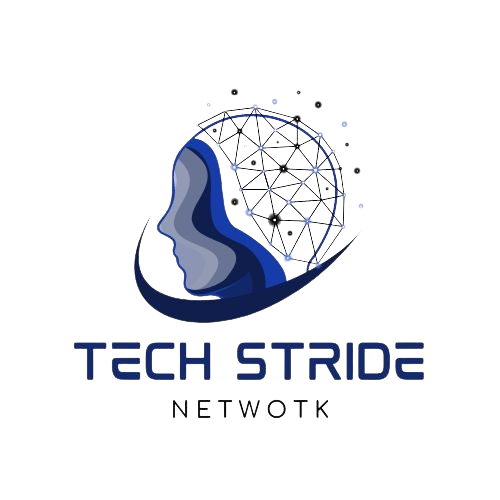In the ever-evolving realm of generation, the difference between front-end and back-end improvement is more than just about coding—crafting stories and building solid functionalities that strengthen those reports.
As we pass through 2024, knowledge of those critical areas is essential for any commercial enterprise aiming to stay inside the virtual race beforehand.
The Visual Appeal of Front-end Development
Front-end development is the artwork of creating the visible and interactive elements of an internet site or application—the parts that users engage with immediately. It’s about ensuring the user revels in seamless, attractive, and aesthetically captivating content. The function of front-end builders has never been more essential as the demand for intuitive, responsive, and visually appealing interfaces continues to grow.
Technologies in the front-stop improvement have seen a tremendous transformation, with HTML, CSS, and JavaScript persevering to be the bedrock of net layout. However, the advent of frameworks like ReactJS, VueJS, and Angular has revolutionized how developers method the front-stop initiatives, providing more streamlined, green methods to construct dynamic person interfaces.
For groups, investing in the Front-end Development approach focuses on consumer engagement and retention. The visual appeal of your website or app could make or damage the consumer’s choice to return. This is why front-stop developers are not simply programmers; they may be the architects of your virtual product’s first impressions.
The Engine Room: Back-end Development
While frontend development hooks the users, the top ten back-end development is where the real magic occurs.
This improvement phase specializes in server-aspect common sense, databases, and the architecture that permits websites and apps to function seamlessly.
Back-end development makes an internet site dynamic and capable of handling complex calculations, records control, and 0.33-party integrations.
The spine of back-end improvement lies in its languages and frameworks. Languages like Python, JavaScript (via Node.Js), and PHP dominate this area, each with frameworks that enhance productivity and performance.
Django, Laravel, and Ruby on Rails are frameworks that make back-end coding more structured and testable.
For organizations, back-end development approaches scalability and safety. It’s approximately ensuring that your platform can cope with elevated hundreds as your consumer base grows and that your user’s data is included against threats. A sturdy back-end is crucial for long-term virtual achievement.
The top ten backend frameworks which are widely recognized and can be popular among builders for constructing robust and efficient Internet applications:
1. Django – An excessive-level Python net framework that encourages fast development and a clean, pragmatic layout.
2. Express.Js – A minimum and flexible Node.Js web utility framework offering solid internet and cell application capabilities.
3. Ruby on Rails – A server-side web application framework written in Ruby under the MIT License, Rails is a model-view-controller (MVC) framework, imparting default systems for a database, an internet carrier, and web pages.
4. Laravel – A PHP net framework with expressive, stylish syntax to improve net applications following the MVC architectural pattern.
5. Spring Boot – Part of the larger Spring framework, Spring Boot takes an opinionated technique to construct production-geared-up applications in Java rapidly.
6. ASP.NET Core – A go-platform, high-overall performance framework for building present day, cloud-based, totally Internet-related programs.
7. Flask** – A micro web framework for Python based on Werkzeug and Jinja 2, Flask is intended for small to medium applications with more straightforward necessities.
8. Node.Js – Technically no longer a framework, but its runtime surroundings permit the building of back-end offerings and programs using JavaScript.
9. Phoenix- An internet improvement framework written in Elixir which implements the server-aspect MVC sample.
10. FastAPI – A contemporary, speedy (high-performance), internet framework for constructing APIs with Python 3.7+ primarily based on standard Python kind hints.
These frameworks provide various alternatives for server-side improvement, catering to distinct programming languages and undertaking requirements.
Bridging the Gap with Front-end Development
The line between front-end and back-end development is increasingly blurred with the upward push of complete-stack development. Front-end Developers are jacks-of-all-trades, equipped to address your mission’s client-aspect and server sides. This holistic approach ensures that both ends of your software are designed to work collectively seamlessly, which can reduce fees and time to market.
Full-stack development isn’t always just about dealing with each front; it is about knowing how to make them interact efficaciously. This would involve selecting the proper technology stack or learning how to optimize your utility’s load instances and responsiveness. With this kindly check out The Software Post for more development related posts.
Choosing the Right Path
Deciding whether to recognize front-end, back-end, or full-stack development depends mainly on your venture needs. If user experience is your priority, front-quit improvement must be your focus. On the other hand, if you want robust statistics processing and protection, back-end development is vital. For startups and smaller teams trying to develop quickly and correctly, complete-stack development might be a great direction.
Future Trends
As we look to the future, emerging technologies like artificial intelligence and system learning are starting to play a position in each front-end and back-end improvement. AI is beginning to be utilized in the whole lot, from improving person interfaces to automating back-end approaches and pushing the boundaries of what digital structures can do.
The demand for professional developers in front-end, back-end, and complete-stack roles continues upward. Understanding those disciplines and, more importantly, how they could paint collectively is vital for any enterprise or developer seeking to make a mark in the contemporary digital world.
Conclusion
Whether you beautify your user interface with modern-day front-quit technology or streamline your returned-give-up strategies for extra efficiency, the key is to live informed and adaptable. The internet improvement landscape is continually converting and staying ahead, and methods are being prepared to evolve. Embrace the dynamics of front-end and back-end improvement, and watch your virtual projects thrive within the aggressive marketplace of 2024.

